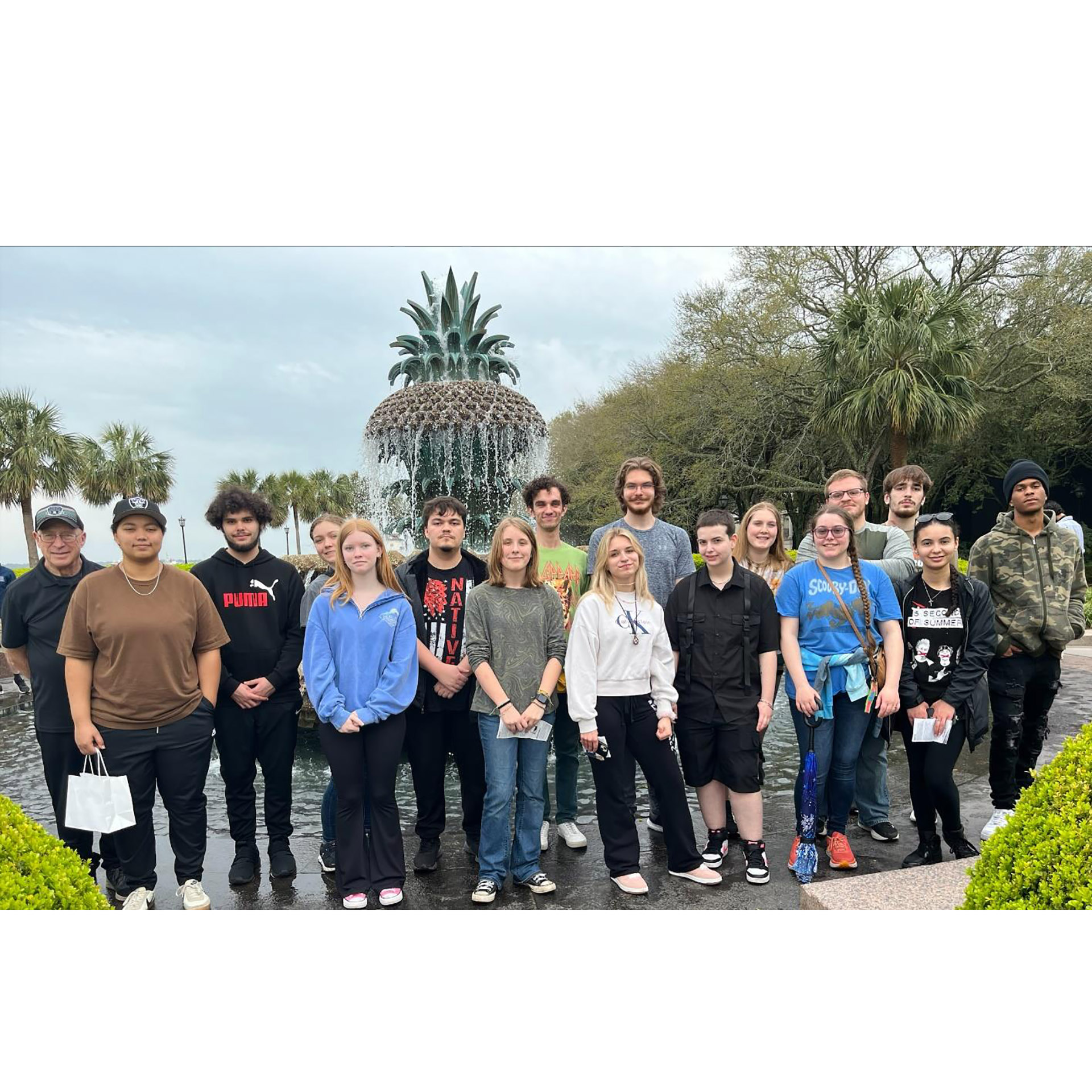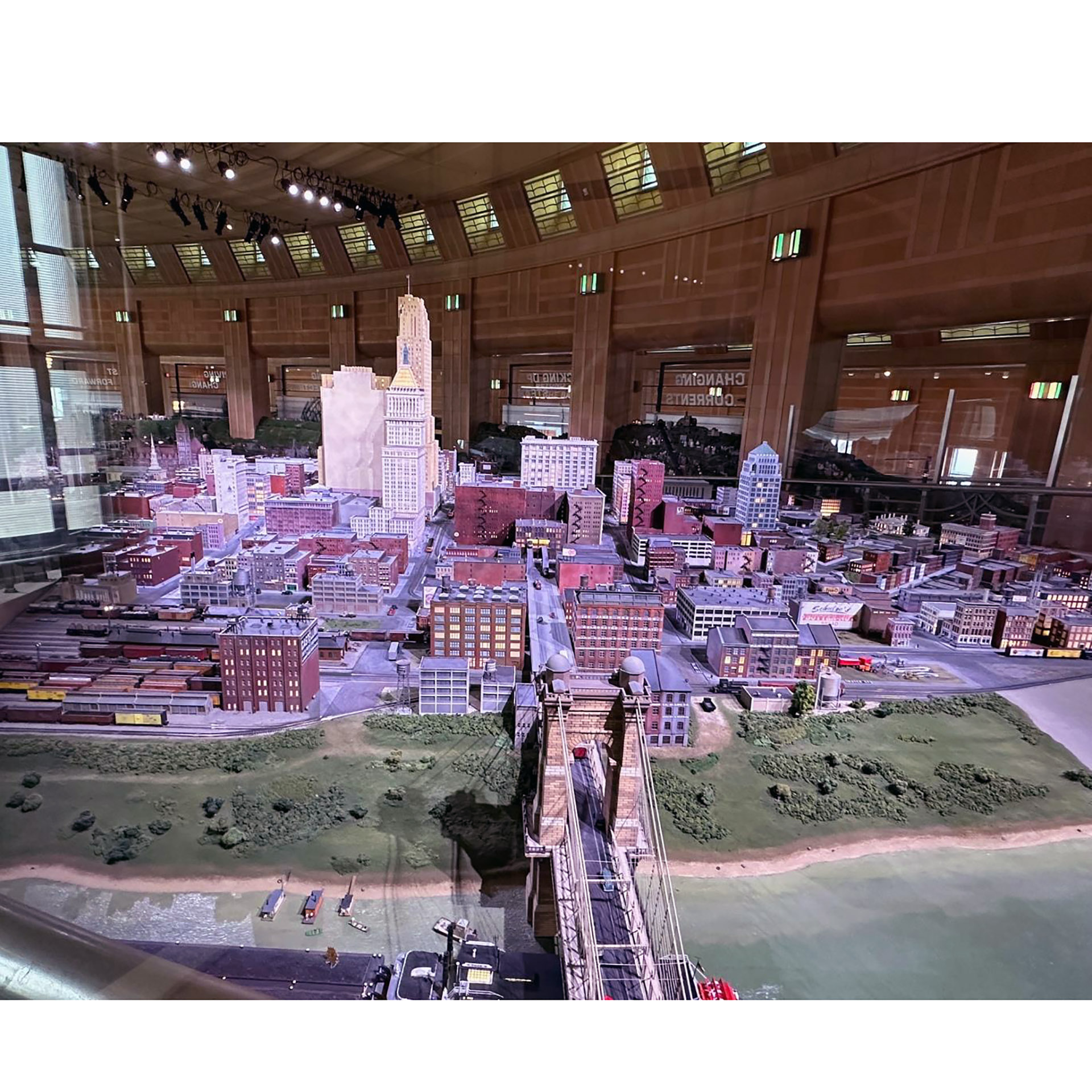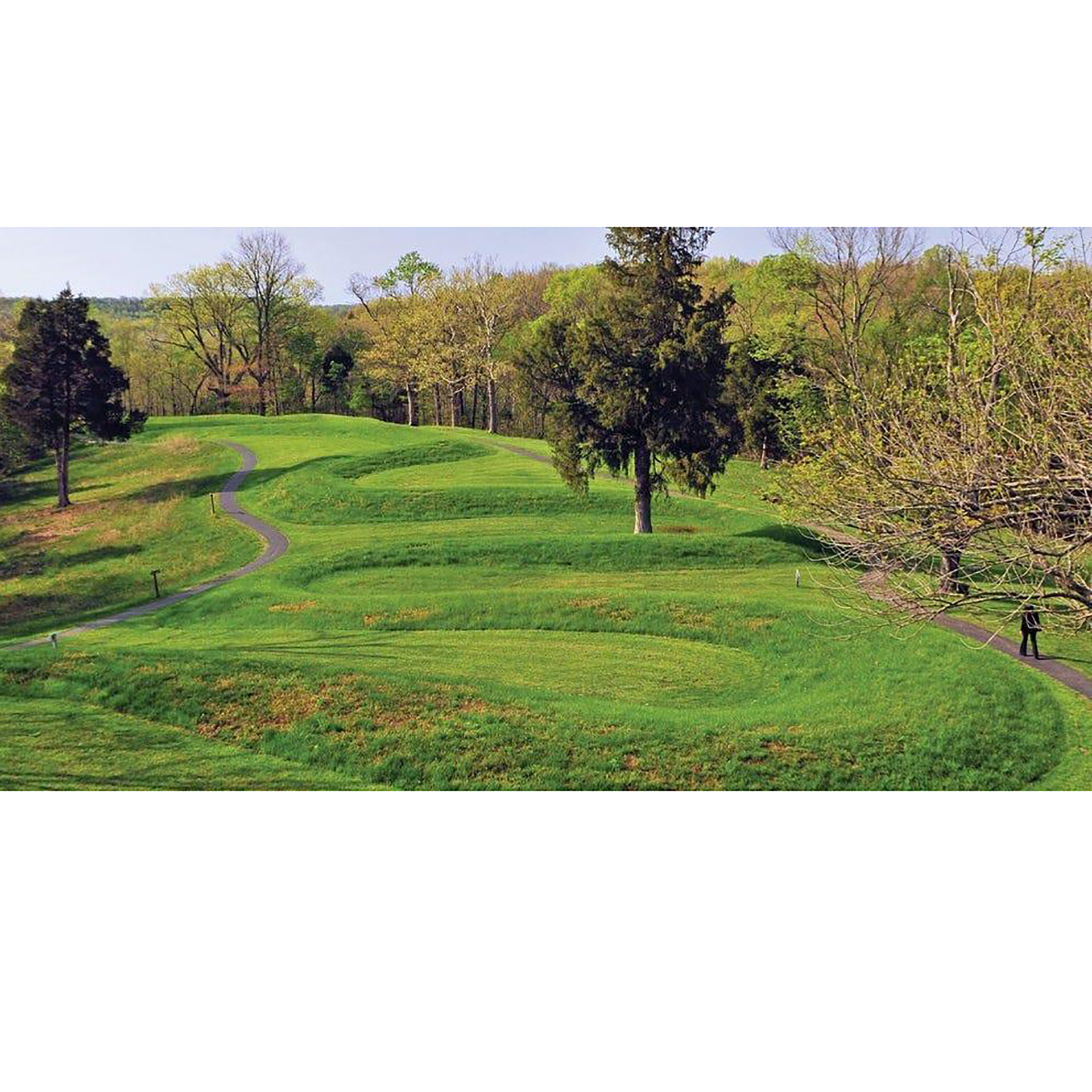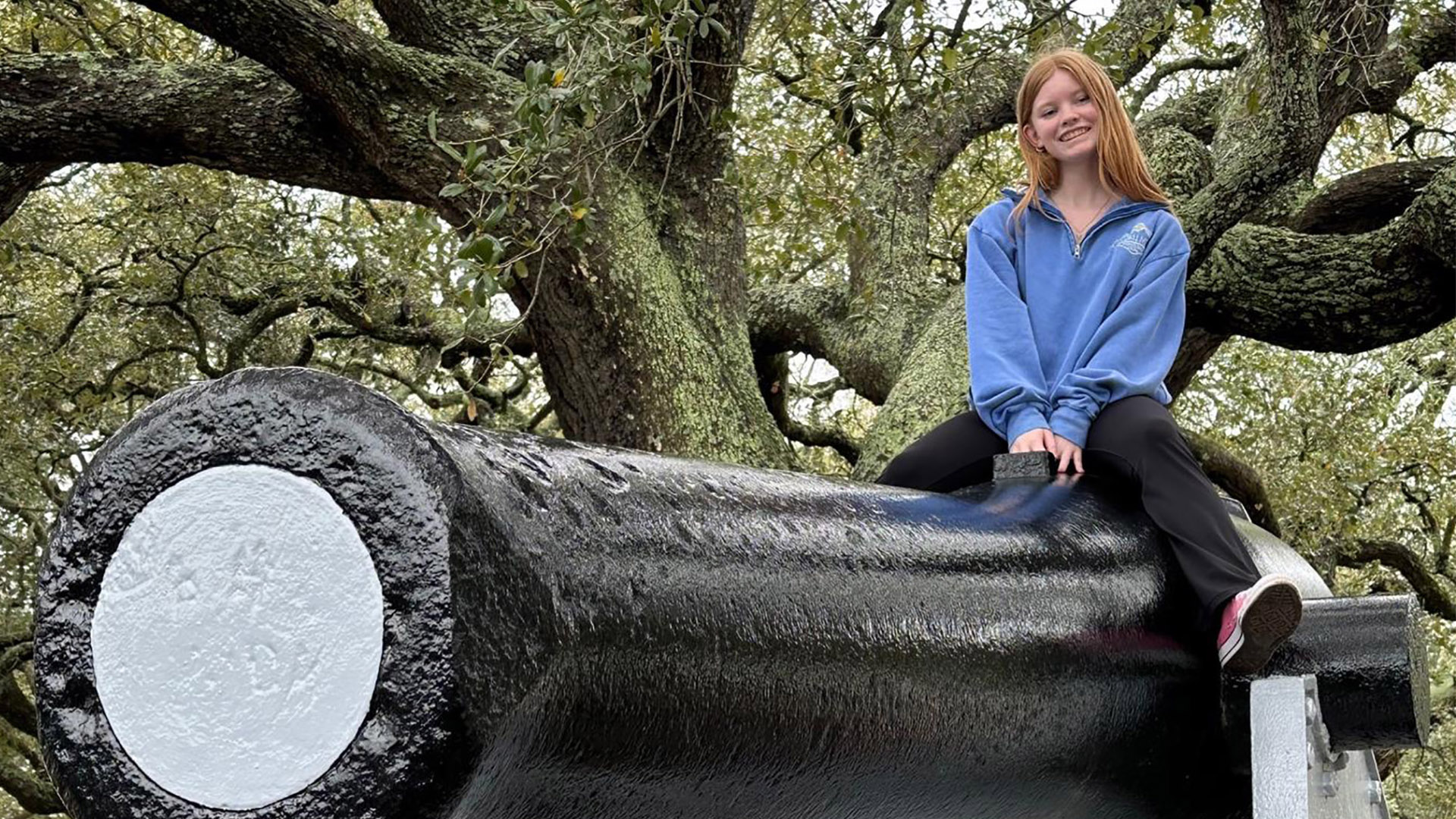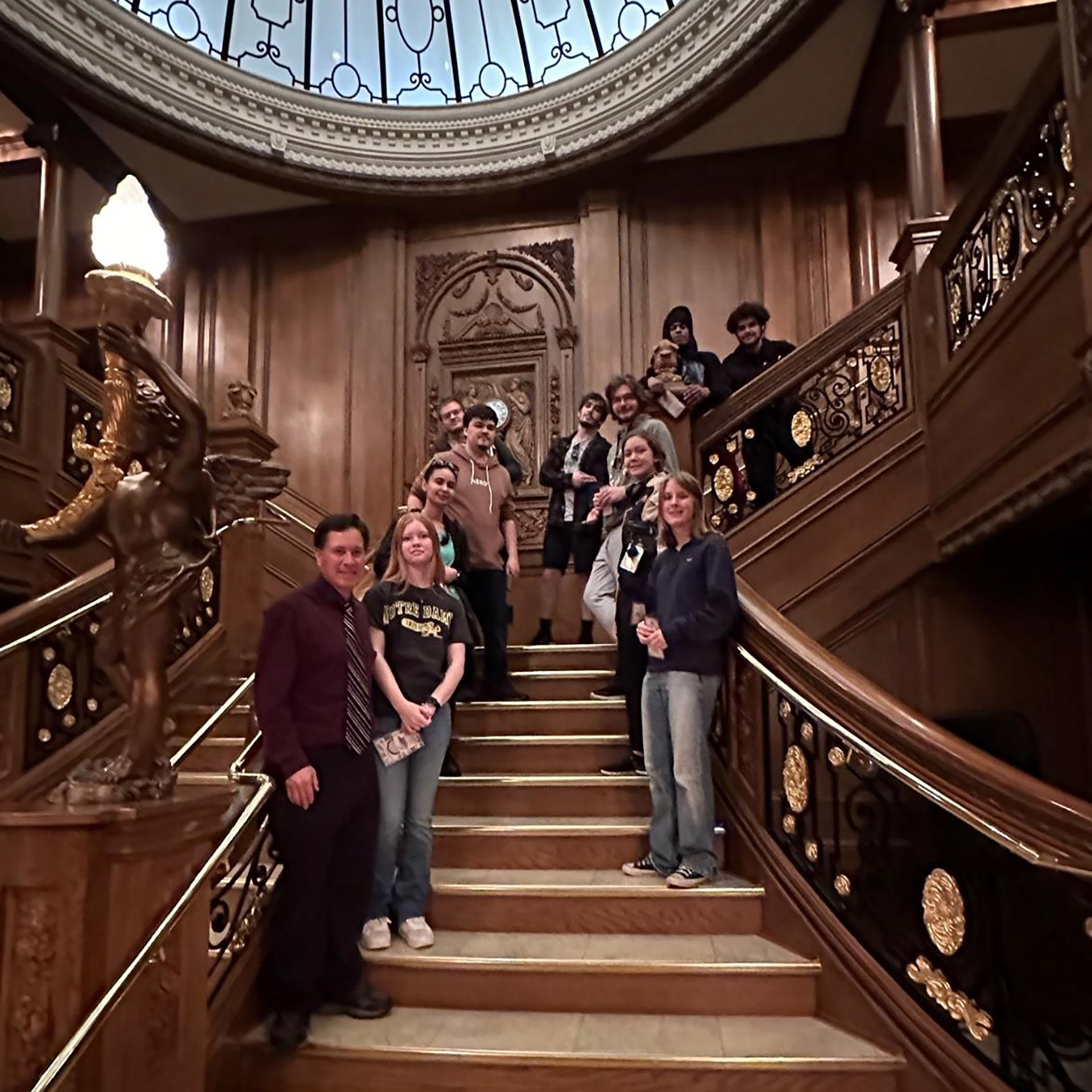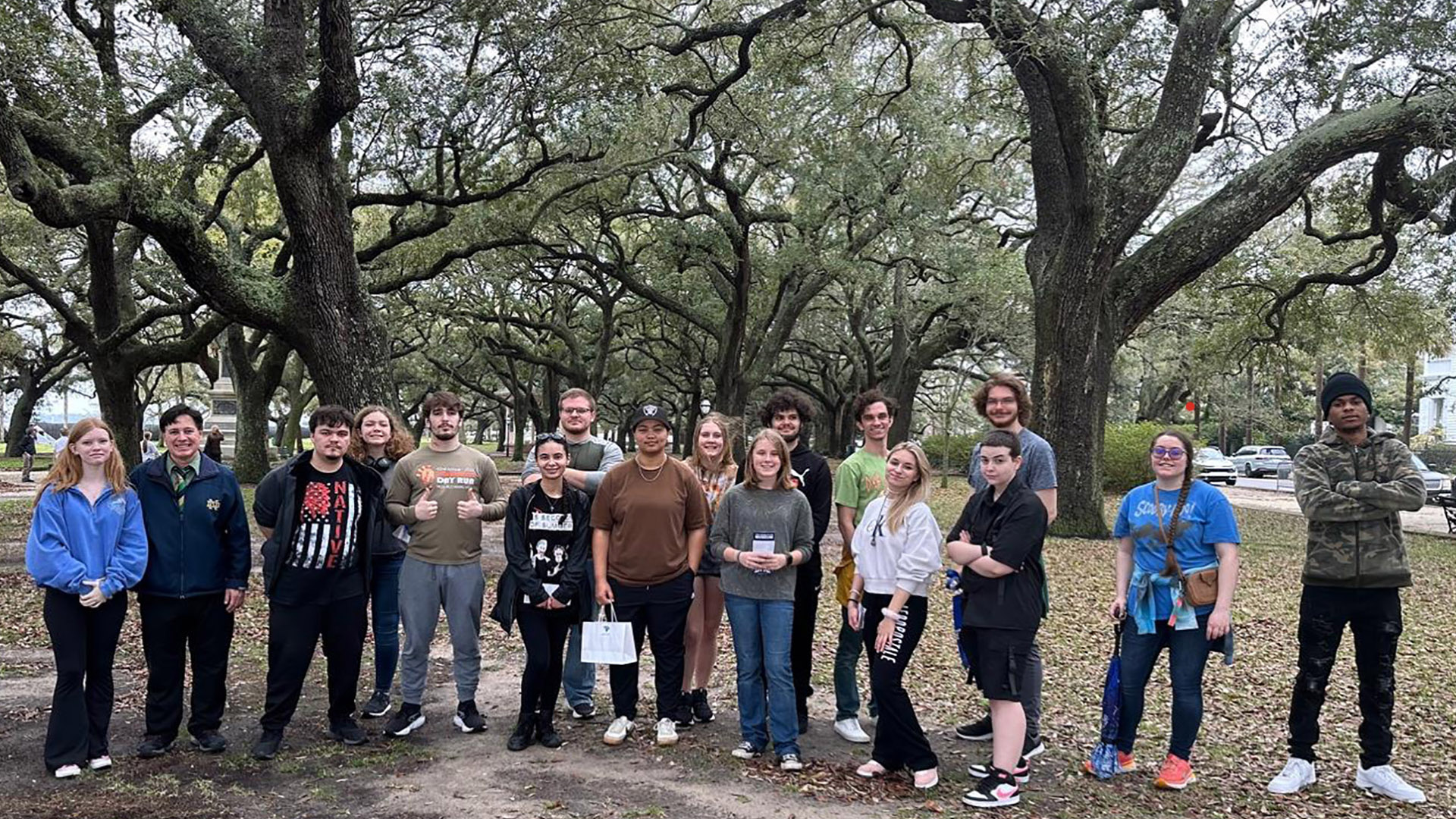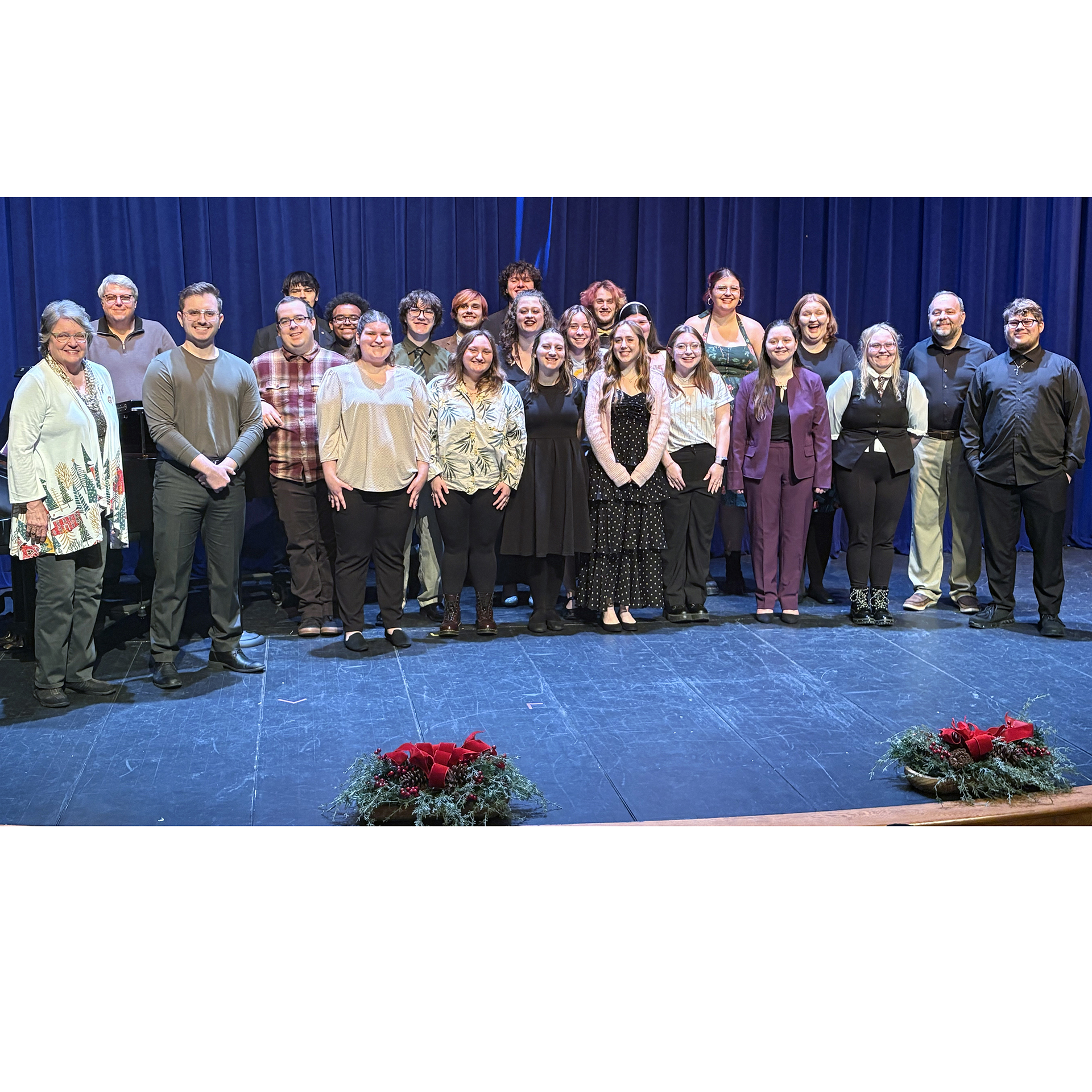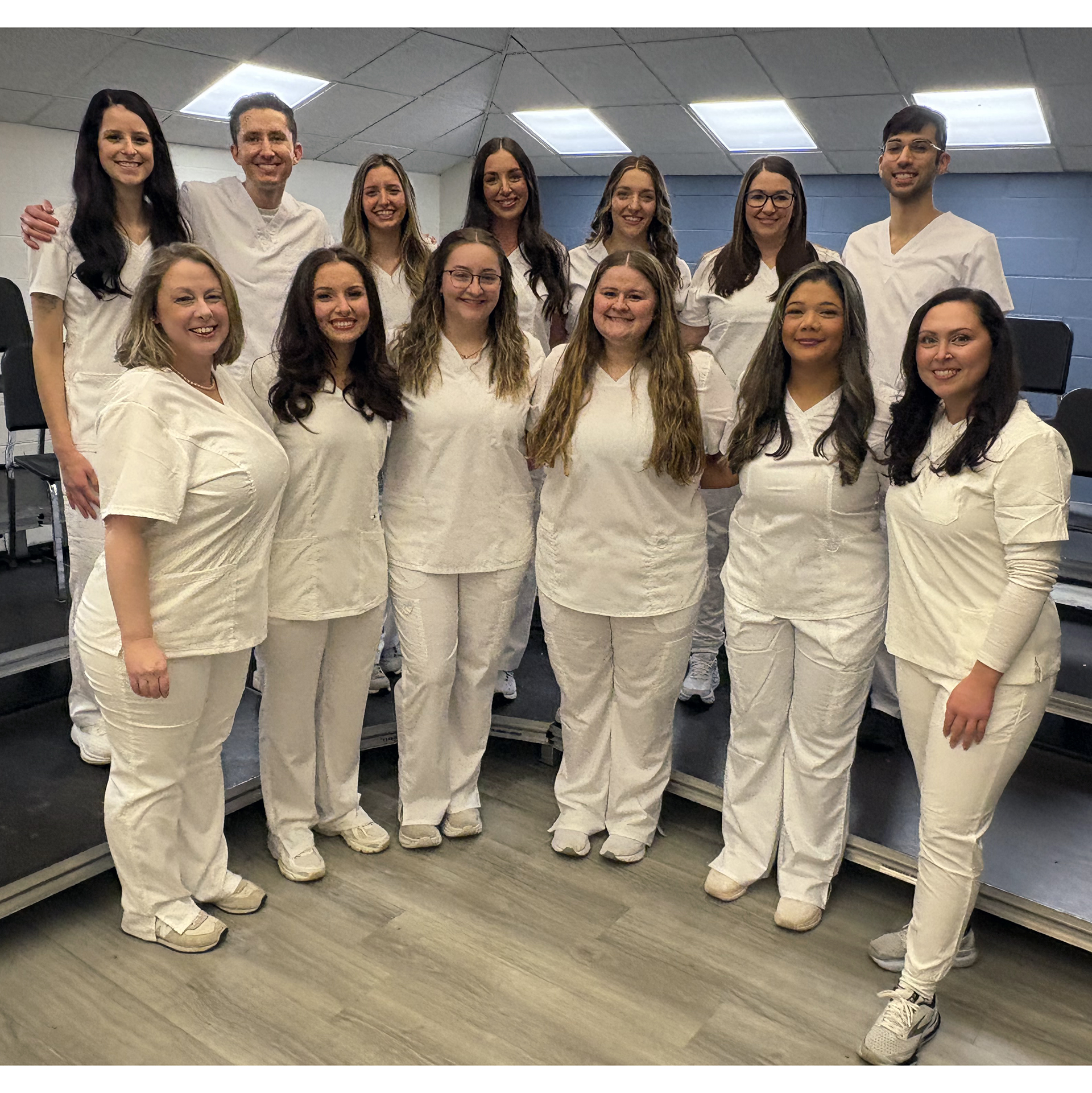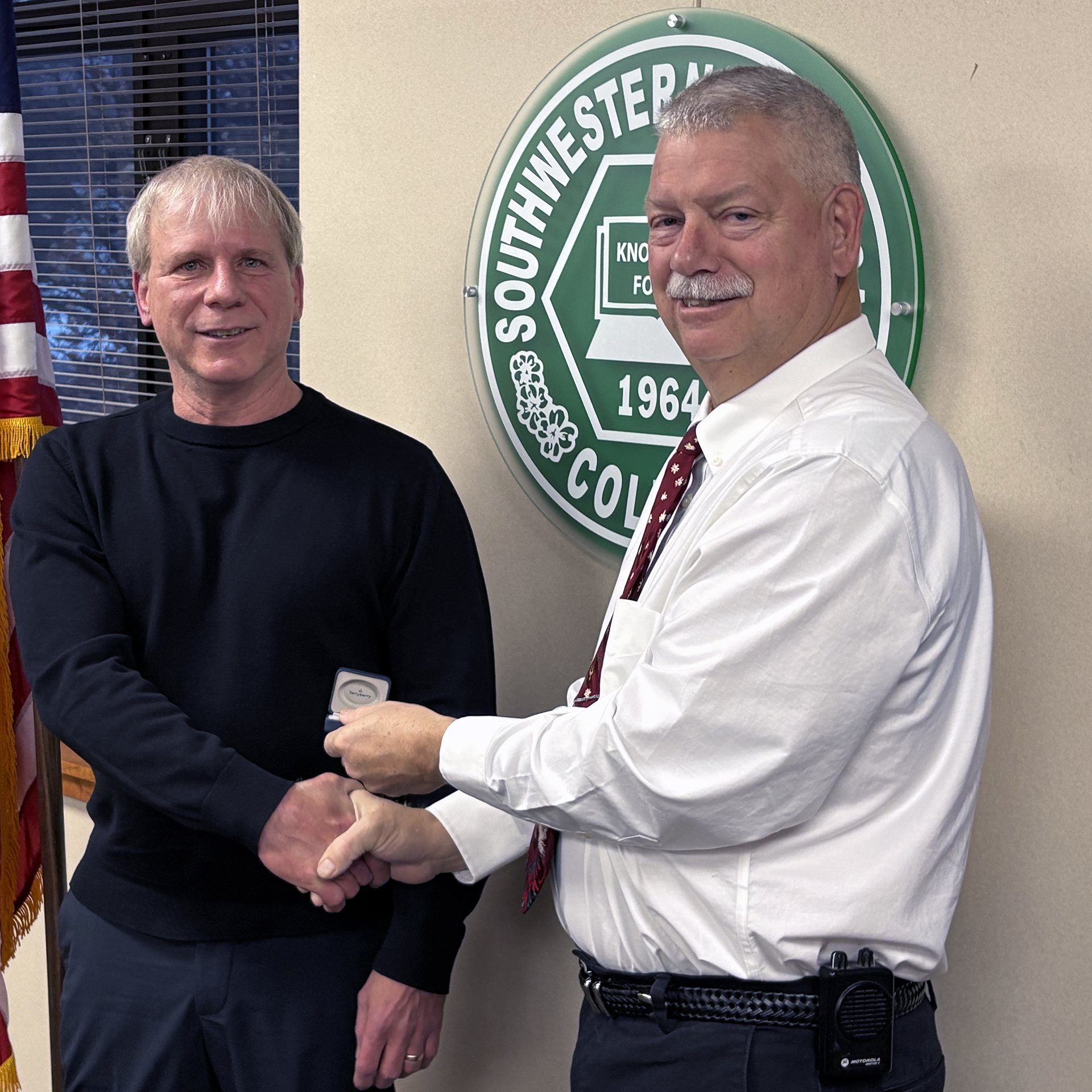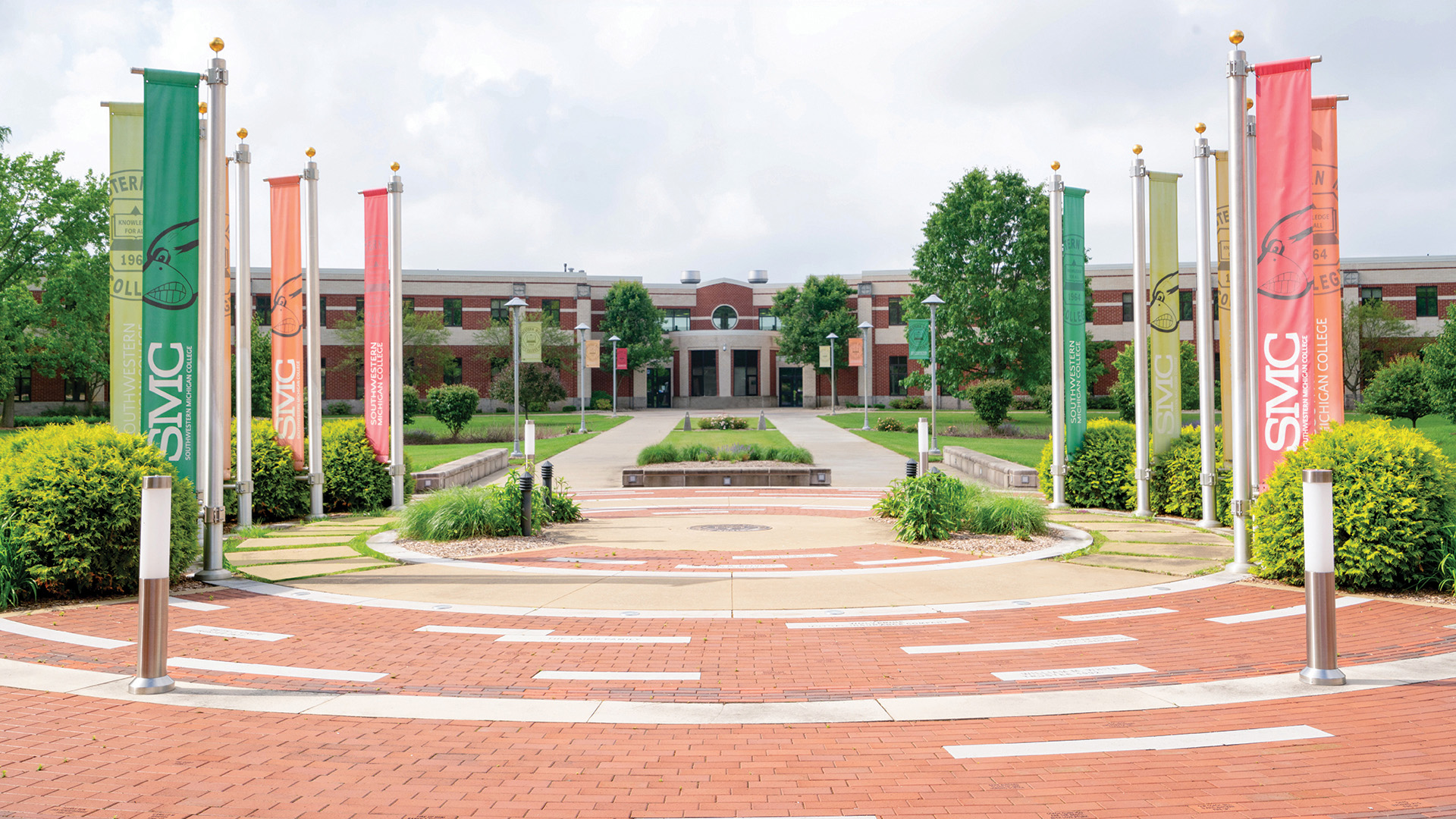
News
SMC Students Explore Ohio, Tennessee, West Virginia and South Carolina
Published on April 16, 2024 - 9 a.m.
This year’s Southwestern Michigan College extended learning experience exposed history students to Ohio, Tennessee, West Virginia and South Carolina — 2,000 miles in four days.
Nathan Andrina, Kaylee Brooks, Lyla Elrod, Lanie Gist, Seth Pompey, Gabby Blake, Michael Burks, Shane Edwards, Nathan Hetler, Lil Schinbeckler, Devin Bridges, Koya Cross, Olivia Garrod, Micah Ordway and Paige Waldrop participated.
The group, led by Professor Dr. Jeff Dennis, his daughter, Chloe, and Professor Joe Coti left at 7 a.m. Thursday, March 7, with a send-off by President Dr. Joe Odenwald.
First stop was downtown Cincinnati’s art deco Union Station and two museums specializing in Ohio Valley history.
Displays included a model of 1940s Cincinnati, a 19th-century riverboat, Pleistocene ice cave, dinosaurs and fossils. They viewed an Omnimax film, “Deep Sky,” showcasing far-galactic images captured by the James E. Webb telescope.
“One of my favorite parts was Cincinnati Union Station,” Kaylee Brooks said. “As a young child I always wanted to see dinosaur bones. Another favorite was the Titanic museum. It was interesting to learn that Charleston had a ‘tea party’ before the Boston Tea Party.”
SMC drove south through Kentucky, experiencing an enormous Buc-ee’s convenience store, before stopping for the night in Sevierville, Tenn.
On Friday, SMC entered the Titanic museum at Pigeon Forge. The ill-fated ship which sank in April 1912, has several connections to Dowagiac, from passengers to the investigation.
“The Titanic museum was fascinating,” Olivia Garrod said, “because we got to touch how cold the water would have been that night and get a glimpse into what life was really like on board. I really liked the Anne Frank Center because it gave so much more context to what led up to the Holocaust, that it didn’t happen in a vacuum. The Old Exchange and Provost Dungeon was probably the most fascinating stop because so much history happened in one building.”
From Tennessee, they journeyed to Columbia, S.C., for a guided State Capitol tour, then strolled the USC grounds to the Anne Frank Center’s 90-minute tour, including a hidden chamber accessed through a bookcase similar to her actual hiding place from German Nazis in occupied Amsterdam.
March 8 the group continued east across South Carolina for an overnight stay on the campus of Charleston Southern University.
Torrential rain opened the third day, March 9. With Charleston streets inundated, they improvised, replacing the Fort Sumter ferry and a carriage ride with the South Carolina Aquarium and the Charleston City Museum.
By mid-afternoon, as water receded, they hiked south to the end of the peninsula. In the French Quarter, SMC received a guided tour of the South Carolina Historical Society. Its 1827 building is America’s first fireproof structure.
Charleston, south of Broad Street, is one colonial city which today would appear familiar to 18th-century citizens. The lower end of the peninsula remains replete with antebellum mansions, townhouses and meticulously manicured gardens.
At the Battery, where land gives way to the sea, SMC entered a spectacular park of imposing oaks, palmettos and magnolias, interspersed with antique artillery and monuments.
They toured the Old Exchange Building, the center for colonial commerce the British transformed into a prisoner holding pen. The Redcoats never discovered five tons of gunpowder patriots hid in a secret dungeon chamber.
South Carolina played an integral role in winning American independence, with more battles fought there than any other state. In 1791, President Washington was feted with an elaborate ceremony at the Old Exchange.
A short distance from the Old Exchange sits eight-acre Waterfront Park, a plethora of walkways, piers, benches and the Pineapple Fountain.
Devin Bridges “enjoyed Charleston a lot. If I could, I’d go back in time and take the trip again.”
Departing Charleston the evening of March 9, they sojourned to Statesville, N.C. On the final day, March 10, after brunch in West Virginia, they traveled to Great Serpent Mound, eight miles north of Peebles, Ohio. At 1,400 feet in length, it ranks as the world’s largest effigy mound — a serpent-shaped earthen construction. Early cultures credited snakes with sacred powers.
Next came Antioch College and Glen Helen Nature Preserve in Yellow Springs, Ohio. Antioch’s first president was Horace Mann, the “father of American public education.”
“My favorite part of the trip was South Carolina as a whole,” Michael Burks said. “I found a new love for nature due to the hike in Yellow Springs. I got an experience of a lifetime going to places I never knew existed.”
“I really enjoyed the Anne Frank Center and Titanic museum. Detail in both places was incredible,” Micah Ordway said. “I could not only see and hear history, I could feel it. I learned a lot about South Carolina history, its statehouse, Charleston, the Revolutionary War and, of course, its state symbol, the Palmetto tree, which can deflect cannon balls.”
“There were many incredible sights, and many remarkable stories we got to listen to about our nation’s history,” Seth Pompey said, “but it was the true feeling of community that we got to see it while surrounded by one another.”
“The trip was amazing. I definitely learned a lot,” Lyla Elrod said. “One thing that made the trip memorable was how well everyone got along. That made it even more enjoyable. My favorite thing I gained was new friends.”
Lily Schinbeckler agreed the trip was an “eye-opening experience that I will always cherish. Our adventures were memories that will last a lifetime. I am so grateful.”
SMC funds a variety of travel opportunities to broaden students’ experiences, from SkillsUSA for criminal justice, which just won another state title, to the American Chemical Society, most recently in New Orleans, and Chicago, for psychology conferences.
